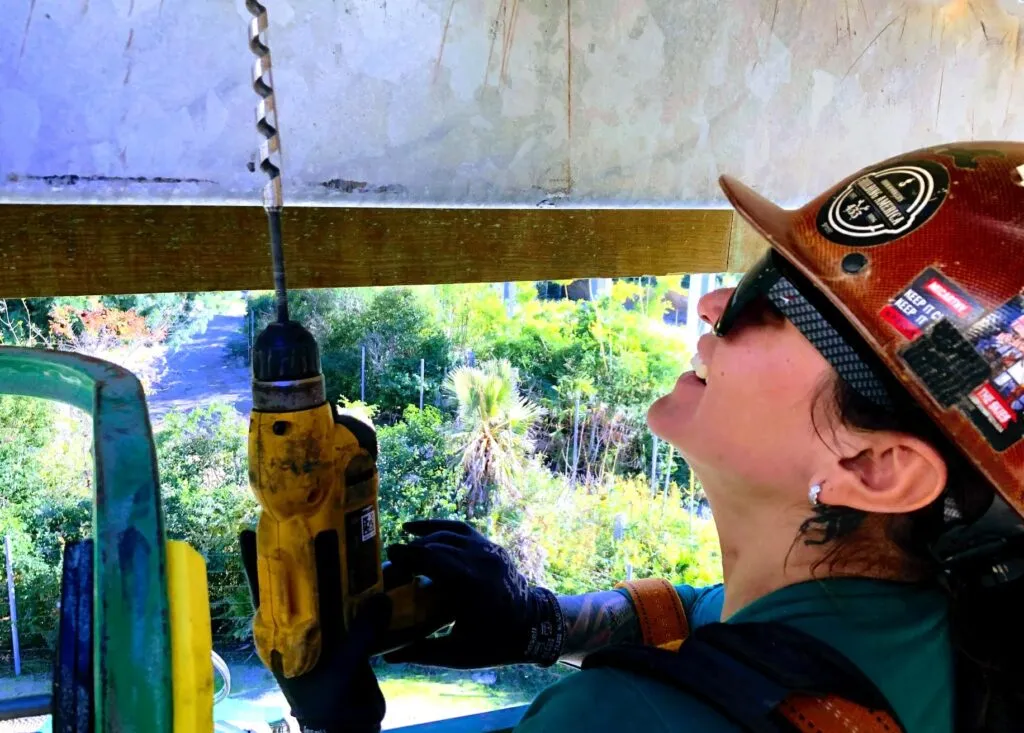
Cindy Crisanto, who has held various jobs in retail, office work, and warehouses, is now charting a promising career as a welder and ironworker—a traditionally male-dominated field. Her career shift was made possible through a new state apprenticeship program that provides child care funding during on-the-job training, helping her balance raising a family with entering the construction trades.
As a single mother of two young boys, Crisanto receives $800 a month in child care subsidies, part of California’s push to diversify its workforce and include more women and underrepresented groups in high-paying, male-dominated fields like plumbing, electrical work, welding, and carpentry. She is in her first year of an apprenticeship through an ironworkers’ union in partnership with Cerritos College, a community college near Los Angeles.
“It makes a huge difference. It’s a lifesaver,” says Crisanto, 36, of Los Angeles. The subsidy helps alleviate the challenges of securing affordable child care for early-morning shifts at construction sites. Under her apprenticeship with Ironworkers Local 433, she starts work at 6:30 a.m., installing structures at the Lucas Museum of Narrative Art under construction in Los Angeles.
The child care funding is part of Governor Gavin Newsom’s initiative to expand apprenticeship opportunities across California, aiming to enroll 500,000 residents by 2029—up from 84,000 in 2018. The state has allocated $15.6 million over two years for the Equal Representation in Construction Apprenticeship Grant (ERICA), which helps individuals like Crisanto with child care costs. Pre-apprenticeship participants can receive up to $5,000 per year, while those in paid apprenticeships can receive up to $10,000 annually.
This initiative aims to encourage more women, non-binary individuals, and underserved communities to pursue careers in construction. Although men are eligible for the program, women remain the primary target. “Women, non-binary and underserved communities interested in a rewarding career in the building and construction industry” are the focus of the child care subsidies, according to the state Division of Apprenticeship Standards.

While it’s too early to gauge the program’s long-term success, some positive trends are emerging. For example, at Cerritos College, the number of women in the ironworkers’ apprenticeship program has risen by 40%, from 26 women among 1,200 apprentices to 37 women. Women make up about 10% of the state's 95,100 apprentices, with even fewer—around 3-4%—participating in construction trades.
State officials are optimistic that the child care grants, along with recruitment efforts, will help diversify the construction industry. "We hope to start to see higher percentages in one, two, or three years from now," said Adele Burnes, deputy chief of the state apprenticeship standards agency.
The flexibility of the grants allows recipients to pay for a variety of child care options, including private babysitters or family members, as well as daycare centers and after-school programs. For example, Crisanto uses the subsidy to pay her relative to care for her children while she works at the construction site.
Crisanto says the work is empowering. “I love what I do. That’s what keeps me going, seeing I can keep up with the guys and keep learning. I am making something of myself. And this is my reward: my career.”
Felicia Hall, workforce development manager for Tradeswomen, an organization that recruits women into construction careers, notes that child care has been a significant barrier for many people, both women and men, in completing apprenticeships. “Child care is the No. 1 thing that hinders them from completing the program,” Hall said.
Rocio Campos, another apprentice, is a 36-year-old mother who came to the U.S. from El Salvador at age 10. She found stability and good pay through a welding class and is now working as an apprentice ironworker. Thanks to the ERICA child care funds, Campos uses the money to pay her mother to care for her two sons while she works in the field. She previously paid her mother from her own wages.
Campos said the financial support “really helped me out a lot,” and finds satisfaction in her work, especially in assembling solar panels and windmills. As an apprentice, she earns about $24 an hour, which can increase to $47 per hour after four years.
Dulce Martinez, 34, also benefited from the child care grant and now works as an instrumentation and controls technician at the Santa Clara Water District. Martinez, a mother of two boys, used the funds to pay for a relative to watch her children while she completed a pre-apprenticeship program. She now earns around $85,000 a year, a significant increase from her previous job.
With the support of child care subsidies, Martinez has found a career that offers better pay and less physical strain than other construction trades she had considered. "It was something I couldn’t pass up," she said. "Physically, I’m going to be OK, and monetarily it’s going to be good for me and my family."